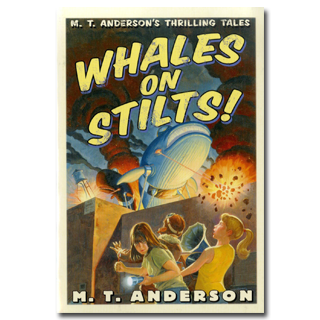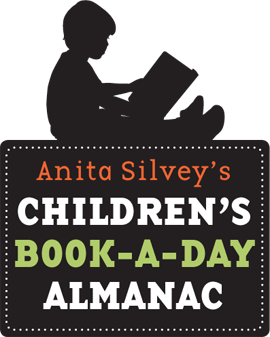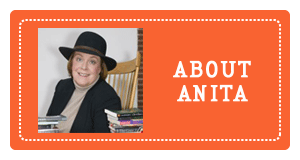
A FEW OTHER EVENTS FOR
JULY 27:
- Happy birthday Paul B. Janeczko (A Poke in the I: A Collection of Concrete Poems; A Kick In the Head: An Everyday Guide to Poetic Forms).
- It’s the birth date of Paul Laurence Dunbar (1872-1906), Jump Back, Honey.
- On this day in 1931, thousands of acres of crops in Iowa, Nebraska and South Dakota are destroyed by grasshopper swarms. Read Little House on the Prairie by Laura Ingalls Wilder.
- For Walk on Stilts Day, you might want to also read The King’s Stilts by Dr. Seuss.
It is amazing how many holidays exist, and what strange ones some of them are. Today is National Walk on Stilts Day. According to those who observe this day, walking on stilts allows you to build coordination and have a lot of fun at the same time. The holiday organizers want you to get out, give stilts a try, and enjoy acting like a clown today.
If taking up stilts for a day seems a bit farfetched as a sport, you might want to read Whales on Stilts! But that book may be even more bizarre than National Walk on Stilts Day. Here’s the first sentence of M. T. Anderson’s amazing story: “On Career Day Lily visited her dad’s work with him and discovered he worked for a mad scientist who wanted to rule the earth through destruction and desolation.” And from that opening the story just careens on from one strange event to another. The mad scientist Larry—part whale and part human, who keeps a bag over his head and douses himself with brine—hates the earth and wants to dominate it. So he has invented electronic gear to control all the whales on the planet, equipped them with laser-beam eyes, and made stilts for them to use in an invasion. Unfortunately for Larry, who is smarter than your usual half human and half whale, Lily and her two friends Katie Mulligan, the star of a mystery book series, and Jasper Dash, Boy Technonaut, devise endless ways to foil his plot. But not before the whales on stilts create a lot of havoc in their hometown.
Virtually every line in this book is hilarious—even the author’s note jokes that Anderson divides his time between the sofa and the floor. The book spoofs thirties and forties series fiction like Hardy Boys and Nancy Drew, but it works, in itself, as a funny, page-turning adventure. Anderson wrote the book during a Canadian vacation and admits that he had a blast doing it: “an expression of pure joy.” He only hopes that readers have as much fun with the book as he had writing it—and they do!
If you like these characters—and what’s not to like about them?—you can continue their exploits in other Pals in Perils books, like Jasper Dash and the Flame-Pits of Delaware or Agent Q, or the Smell of Danger. I wonder if there is a National Jump Into a Flame Pit day? Well, if not, you don’t really need a holiday to have a great time with a Pals in Peril story by M. T. Anderson. You just have to be ready to laugh.
Here’s a passage from Whales on Stilts!:
“Oh, great, great,” said Larry, dumping the vat of brine over his head so it soaked his grain sack and his suit. He put down the empty metal vat. “Oh, wait a second. Wait a second, Gefelty. Just thought of something. By then, I will have taken over the world, and Decentville, er, you know…” Larry made a noise that sounded like several large futuristic lasers blowing up the Decentville police station and the Bijou Theater and the rest of the town being engulfed in flames and destruction as car alarms went off in deserted burning alleyways.
Lily’s father bit his lip. “Aw, shoot,” he said. “Well, we’ll reschedule.’’
Originally posted July 27, 2011. Updated for .






Yup. “Whales on Stilts” is one of the funniest books ever. Though the whale invasion is something we must take seriously, don’t you think? Any minute now…
And readers who move on to “Jasper Dash and the Flame Pits of Delaware” should be sure to check out the Governor of Delaware’s letter to Tobin here:
http://library.blogs.delaware.gov/2009/09/15/a-big-thank-you-from-governor-jack-markell/
Leda: This is so funny… thank you for sharing this link! It is good to know that some Governors have a sense of humor.
That is wonderful!! Now I really need to read this book. And yes, it is good to know that some Governors have a sense of humor. I went to college on the Eastern Shore of Maryland, so we traveled to Delaware quite a bit to take advantage of no sales tax.
I love humor so I’ll be reading this one in a while.
Even though when I think of whales, I smile,
when I think of stilts, I see me in a pile,
For quite a while.
Thanks for this recommendation–I think this is going to be the next audiobook my family listens to. One of your additional recommendations, Weslandia (by Paul Fleischman), has been my favorite picture book since my eldest was a toddler–he’s been a “march to your own drummer” kid since day one. : )
I have been enjoying M.T. Anderson all summer long (Feed, Octavian Nothing, Burger Wuss); I was surprised to discover that I had actually read this book the day Anita chose to write about it! Mr. Anderson has a gift for dialog; he can both create outrageously hilarious situations and also soul shattering ones in his novels. I am so glad to find the former being appreciated here with Whales on Stilts. This novel will without a doubt make a big splash in my classroom library come September! Thanks again for all the excellent recommendations.